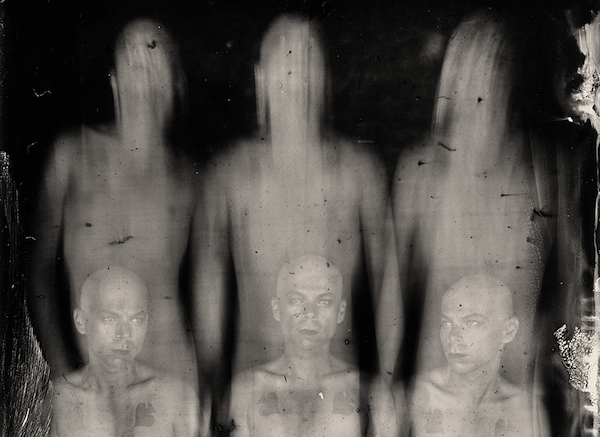Instagram, for all its corporate complications and endless lifestyle posturing has become a viable avenue for artists to share work. It’s the open, free for all, pop gallery of the world. Sure, there’s a lot of junk being algorithmically forced to the top, but with a little careful pruning and good digital habits one can uncover a world of wonder.
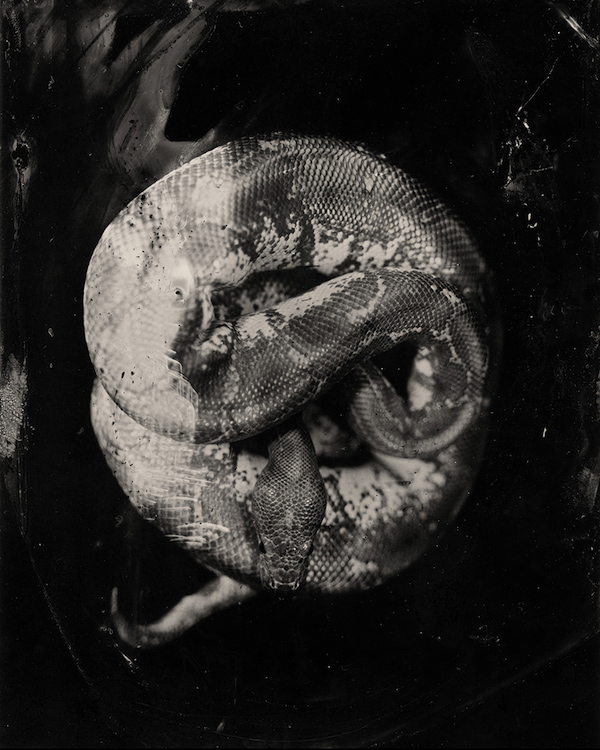
Erica Weitz photograph.
I stumbled on the work of Erica Weitz rather randomly. An artist I had photographed posted an image of herself taken by Weitz using a wet plate technique, whereby a metal plate is coated with photosensitive collodion and exposed while still wet. Upon tapping her name I was immediately pulled into a haunting, mystical universe that evoked spirit, magic and alchemy. Soon her feed was advertising an upcoming show at Lethal Amounts, one of DTLA’s premiere underground galleries. What started as a transmission received as if by accident, led me, in the real world to seek out the physical form of this work. The spell had been cast.
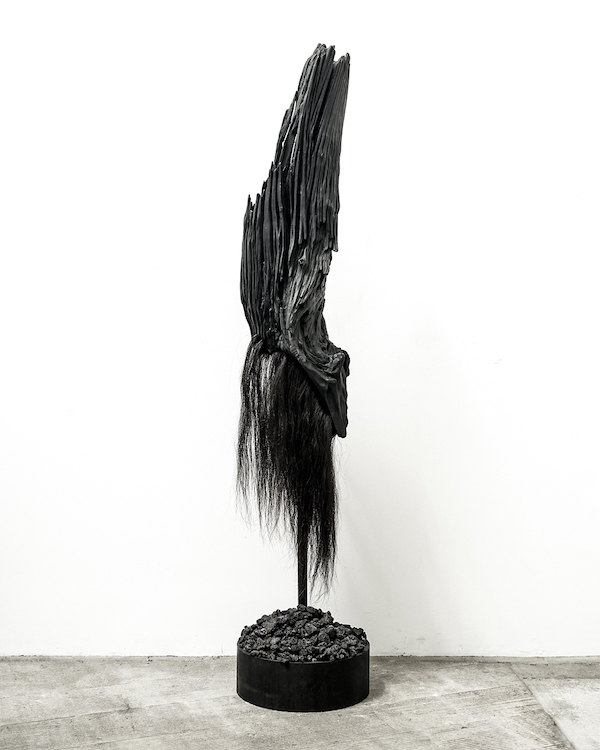
Erica Weitz “Primordial Alter.”
“Primordial Order,” Weitz’ first solo show, “an experimental ritual using alchemy and numerology” consists of 13 large prints framed in charred wood and coated in deep resin. She employs a series of exposures taking the viewer on a journey from the order of one simple seated Venus to the chaos of the nearly unidentifiable by way of increasing multiple exposures. The images are monochromatic and murky—photographed onto black metal sheets—and the subsequent large prints are densely inky. The figures take on a deity-like presence, as though each one were representing its own archetype in a universe yet to be defined.
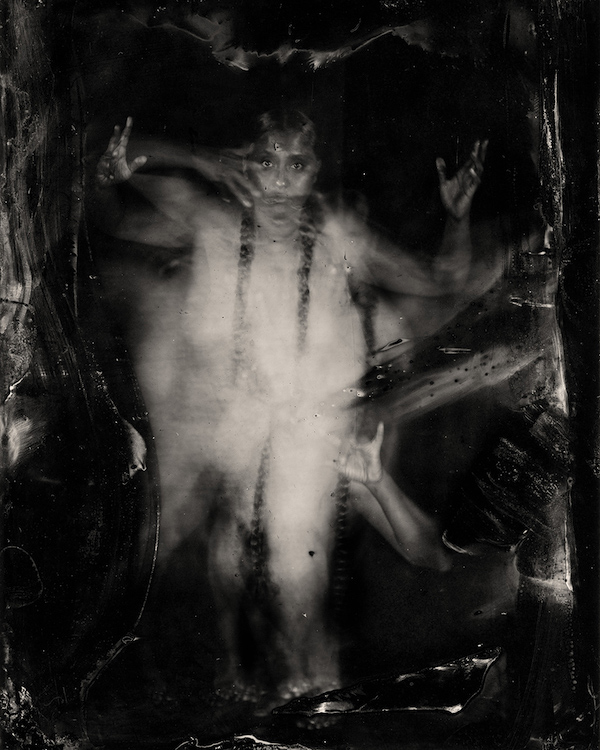
Erica Weitz photograph.
Originally a painter, Weitz developed her photography practice while traveling the world at a young age, spending a year apiece in Uganda and India. Nearly overlooking my interview request via DM she emerged weeks later, enthusiastically agreeing to talk to me, “Painting is a very personal journey. Photography has been a way to experience the outer world. Wet Plate brings it back to the inner world. It’s an interesting form because its all about the process. The process holds something for me that I was missing in digital”
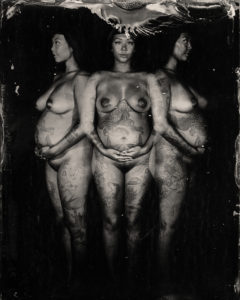
Erica Weitz photograph.
Originally invented in the 19th century, the wet plate process is the perfect hybrid of her disciplines in painting and photography. The photo sensitive emulsion must be mixed and applied by hand to each sheet of metal and the photos must be made within a few minutes before the plates dry. Although the analog photography process is generally understood to slow down the process that digital has sped up, the wet plate process, though manual and methodical, allows for no time to be wasted.
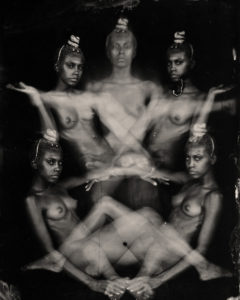
Erica Weitz photograph.
Her figures emanate a spectral quality which is partially due to the wet plate’s unusual response to light frequencies. But there is something else. When discussing her sitters she offers, “Everybody are friends. I could spend hours with somebody and catch up. I ask them to to channel something or focus on a thought. Its like a divination that allows for a spirit to come through. Going deep into the process of creation adds to the quality of the image. Its almost like a performance piece”
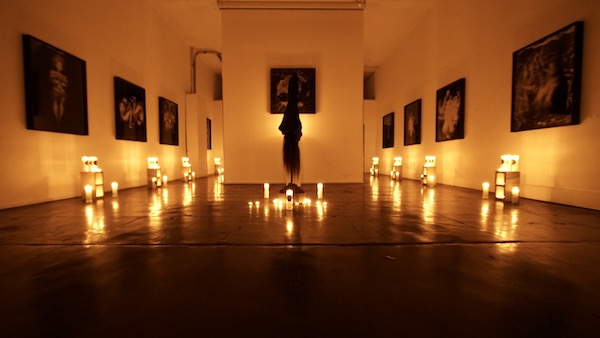
“Primordial Order” closing ritual.
To close the unfortunately brief two-week exhibition, Weitz made the decision to hold a candlelight closing, not only to allow the works to be seen under a flickering glow but to allow those in attendance to participate in lighting the candles. “In India I would witness the Puja, where a candle is lit and sent down the river. The whole process was a ritual. In every ritual you open a circle, do your work, then close the circle. It doesn’t feel like an ending, but like a beginning. I wanted to send energy out into the world.”
Weitz’ is currently exhibiting a series of totemic assemblage sculptures at Church Boutique in Los Angeles.
Erica Weitz’ IG handle is @erica.weitz

